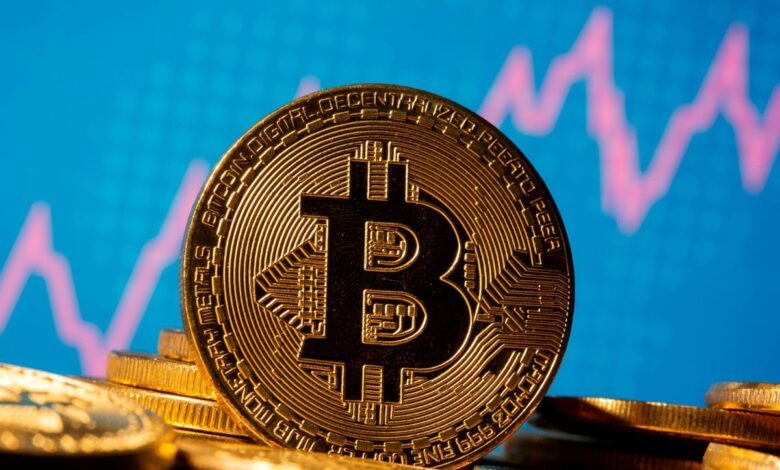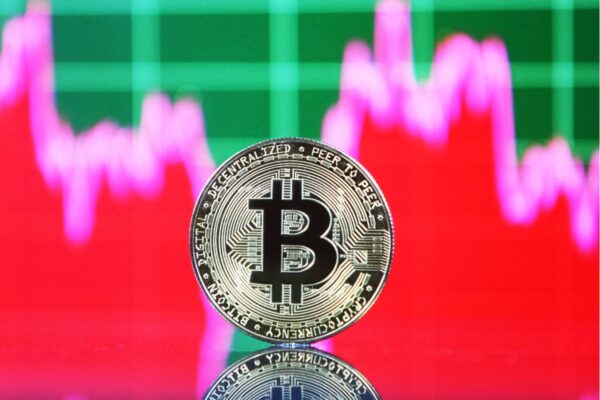Bitcoin Price may see a “huge dump” after crossing $20k warns

Bitcoin price may see a “huge dump” after crossing the $20K
Trader BTC price increased by $20,500 may happen on the day, but the impact will be negative, according to recent research.
What is Bitcoin?
You may directly buy, trade, and trade bitcoin without the need for a middleman like a bank. This digital currency is decentralized. The idea of “an electronic payment system based on cryptographic evidence rather than trust” was originally put out by Satoshi Nakamoto, the person who created Bitcoin.
Since every single transaction ever made in Bitcoin is registered on a public ledger that is available to everyone, bitcoin transactions are difficult to reverse and difficult to counterfeit. This was intended: The decentralized nature of bitcoins is shown that neither a government nor an issuing organisation backs them and that the only thing ensuring their value is the system’s built-in validation.
The reason something is worth money, in the words of Anton Mozgovoy, co-founder and CEO of the digital financial services company Holyheld, “is only because we individuals, decided it had matter —same as gold.”
The value of Bitcoin has increased since it was first made available to the broad public in 2009. Despite formerly trading for less than $150 per coin, 1 BTC is now worth around $30,200 as of June 8. Because there are only 21 million coins available, many believe that the price will continue to rise over time.
This is especially true now that more important institutional investors are beginning to use it as a type of digital gold to hedge against inflation and market volatility. Over 19 million coins are in circulation now.
Time to get $20,000 Bitcoin

Data from Cointelegraph Markets Pro and TradingView were used to track BTC/USD as it crossed $19,600 at the time of writing.
The pair had behaved more erratically the day before, briefly losing $19,000 before bid approval pushed the market upward.
The monthly closing and European Consumer Price Index (CPI) figures gave the day’s performance for the bulls the appearance of value.
Traders were keeping an eye on geopolitical actions surrounding Russia’s formal acquisition of the Ukrainian region and its ramifications. Vladimir Putin, the president of Russia, was scheduled to deliver a speech at the ceremony when he would legally confirm the accession of four areas of Ukraine to Russia.
Il Capo of Crypto said, “Today is the day,” referring to Bitcoin’s upcoming push higher, which should eventually result in losses.
The price action, he claimed, would probably resemble a “pump to 20000-20500 before Putin’s address. then a large dump
Market analysis company IncomeSharks provided a potentially more optimistic perspective, claiming that bears had recently lost confidence in shorting Bitcoin.
On September 29, it tweeted to its followers, “Bitcoin selling pressure has slowed rather:
“It’s unbelievable how quickly things are moving up now. It earlier felt as though it were weighed down. It occurs to be moving right now, and the wind is blowing. In contrast to their last euphoria, bears now occur to be shorting with a little more caution.
Meanwhile, IncomeSharks honoured that US equity futures were gaining an upside rate throughout the day, which allowed for price relief across related crypto markets.
Futures for the $SPX are rising. The markets keep swinging almost every day this week.
Considering European economic data, a gloomy day

The situation in Europe was less promising because the CPI figures for the Eurozone’s member states were so alarming.
According to market critic Holger Zschaepitz, the German CPI came out at 10%, the highest ever recorded rate, and reached double digits for the first time since World War II.
The release of the September combined Eurozone inflation figures were scheduled for that day, but it is still desired in this writing.
The outcomes will put an end to a tumultuous week for Europe, during which the Bank of England resumed quantitative easing (QE) by buying assets to avert a financial crisis in the UK.
It was only a matter of time until other central banks followed suit, according to Bitcoiners who responded. At the time, Arthur Hayes, the former CEO of the futures trading site BitMEX, stated: “A virus starts in one host and swiftly spreads to the next. Central bankers share a common mindset and behaviour. Your banana republic is the next in line if it’s occurring in the UK. Lord Satoshi’s cure is Bitcoin.
Hayes mentioned the central bank policy instrument known as the yield curve control, or YCC, which he believes will also become a given in the future.
How does Bitcoin function?
An allocated digital ledger understood as a blockchain does as the foundation of bitcoin. As the term implies, a blockchain is a network of linked data made up of units called blocks that each contains details about a single transaction, the date and time, the total amount, the buyer and seller, and a special identifying number for each sale. A digital chain of blocks is created by placing entries chronologically.
As a public database of cryptocurrency transactions, Stacey Harris, consultant for Pelicoin, a network of cryptocurrency ATMs, explains, “Once a block is published to the blockchain, it becomes accessible to anyone who chooses to study it.”
Since blockchain is decentralized, no one community has control over it. The CEO and co-founder of African cryptocurrency exchange Quidax, Buchi Okoro, says that the platform is “like a Google Doc that everyone can contribute on.” No one owns it, but anyone with a connection can add to it. Additionally, when another user makes a change, your copy is updated.
Although it would seem risky that someone could change the blockchain, this is exactly what makes Bitcoin safe and dependable. Before a transaction block can be included on the blockchain, it needs to be approved by the bulk of Bitcoin users. Furthermore, the distinct codes that are used to identify users’ wallets and transactions must adhere to the proper encryption standard.
These codes are long, random numbers, which makes it very difficult to create fake versions of them. The amount of statistical unpredictability in the blockchain verification codes, which are necessary for every transaction, greatly decreases the possibility that anyone may perform fraudulent Bitcoin transactions.
Do you want to buy bitcoin?
While many financial experts suggest their customers buy cryptocurrencies, they won’t really do it until the client directly demands it. The biggest problem, according to Ian Harvey, a certified financial planner (CFP) in New York City, is when someone wants to support bitcoin but the investment they selected doesn’t perform well, preventing them from suddenly being able to send their children to college. Consequently, the threat wasn’t justified.
Due to their speculative nature, several financial experts encourage their customers to use cryptocurrencies as “side” investments. Some people “refer to it as a Vegas account,” according to Dallas CFP Scott Hammel. Please don’t include this in the real long-term perspective. Make sure it doesn’t monopolize your portfolio too much.
Because bitcoin works similarly to a single stock, advisors advise against investing a big amount of your portfolio in any one company. Planners advise investing no more than 1% to 10% of your money in Bitcoin if you’re passionate about it. Hammel argues that you would never invest a significant portion of your portfolio in it if it were just one stock.




